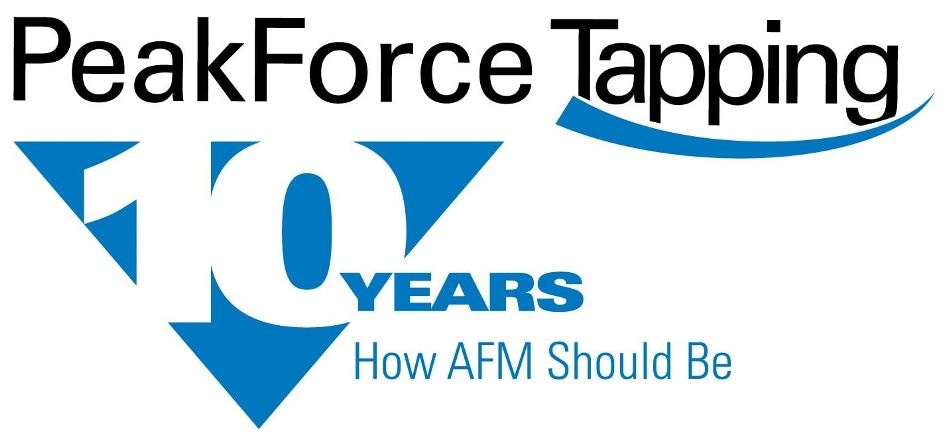At the 2019 MRS Fall Meeting, Bruker announced the 10-year anniversary of PeakForce Tapping, its proprietary atomic force microscopy (AFM) mode. Introduced in December 2009, PeakForce Tapping has been widely adopted in materials, data storage, and semiconductor research. It is outpacing all other recently developed AFM modes in research impact and productivity.

PeakForce Tapping and its associated modes ScanAsyst, PeakForce QNM, PeakForce TUNA, PeakForce KPFM, and PeakForce SECM, have been cited in more than 4,000 peer-reviewed publications over the last 10 years, with over 30% of these publications in journals with impact factors in the top 10%.
Among the many firsts enabled by PeakForce Tapping is work by Professor Konstantin Novoselov and Professor Andre Geim, the 2010 Physics Nobel Laureates for the discovery of graphene, revealing a commensurate-incommensurate state transition in graphene on boron nitride, as shown in their Nature Physics article. In biology, it has enabled new studies of ligand-receptor interactions, of individual microvilli on live cells, and of variations in the DNA double helix structure, to name just a few. In soft matter studies, it has become a workhorse for quantifying properties at interfaces and in interphases, including in adhesives, where other AFM modes struggle.
This has led to one of PeakForce Tapping’s enabled modes, PeakForce Quantitative Nanomechanics (PeakForce QNM), being specifically cited in more than 2,000 publications. In energy research, PeakForce Tapping studies have resolved conductivity along individual lamellae in organic photovoltaics, revealed a nanocontact pinch-off that allows for improved solar fuel devices, and characterized the SEI layer in Li ion batteries in operando as well as ex situ. Battery work using the mode includes a recent Nature Communications article coauthored by Professor John Bannister Goodenough, the 2019 Chemistry Nobel Laureate for the development of Li ion batteries.
“We launched PeakForce Tapping in 2009 because it had the potential to provide new quantitative data, as well as make AFM radically easier to use,” explained David V. Rossi, Executive Vice President and General Manager of Bruker’s AFM business. “We are very pleased to see its wide adoption and praise by AFM researchers around the world.”
“The introduction of PeakForce QNM was a milestone in the history of AFM,” said Professor Georg Fantner, EPFL Lausanne, Switzerland. “Much of the research we do in my lab would not be possible without it.”
“PeakForce Tapping provided my lab with the force control and resolution necessary to produce ground-breaking ligand-receptor interaction maps using functionalized probes on live cells in a very time efficient and controlled way,” added Professor Daniel Müller, ETH Zürich, Switzerland.
“PeakForce Tapping is my favorite mode to study soft matter,” explained Professor Igor Sokolov, Tufts University, USA. “It is uniquely suited for robust and repeatable quantitative imaging, while being a rather simple mode to use. In addition, it is an amazingly flexible platform for developing new AFM modalities.”
“It was previously impossible to resolve the finest structures of a live cell like microvilli, but now with PeakForce Tapping on BioScope Resolve AFM systems I can image them easily,” said Professor Hermann Schillers, University of Münster, Germany.
Thanks to PeakForce QNM, we were able to rapidly obtain pertinent information on the mechanical properties of very soft and sticky polymer materials, such as adhesives or adaptive hydrogels, that other classical SPM techniques were not able to provide."
Dr. Philippe Leclère, University of Mons (UMONS), Belgium